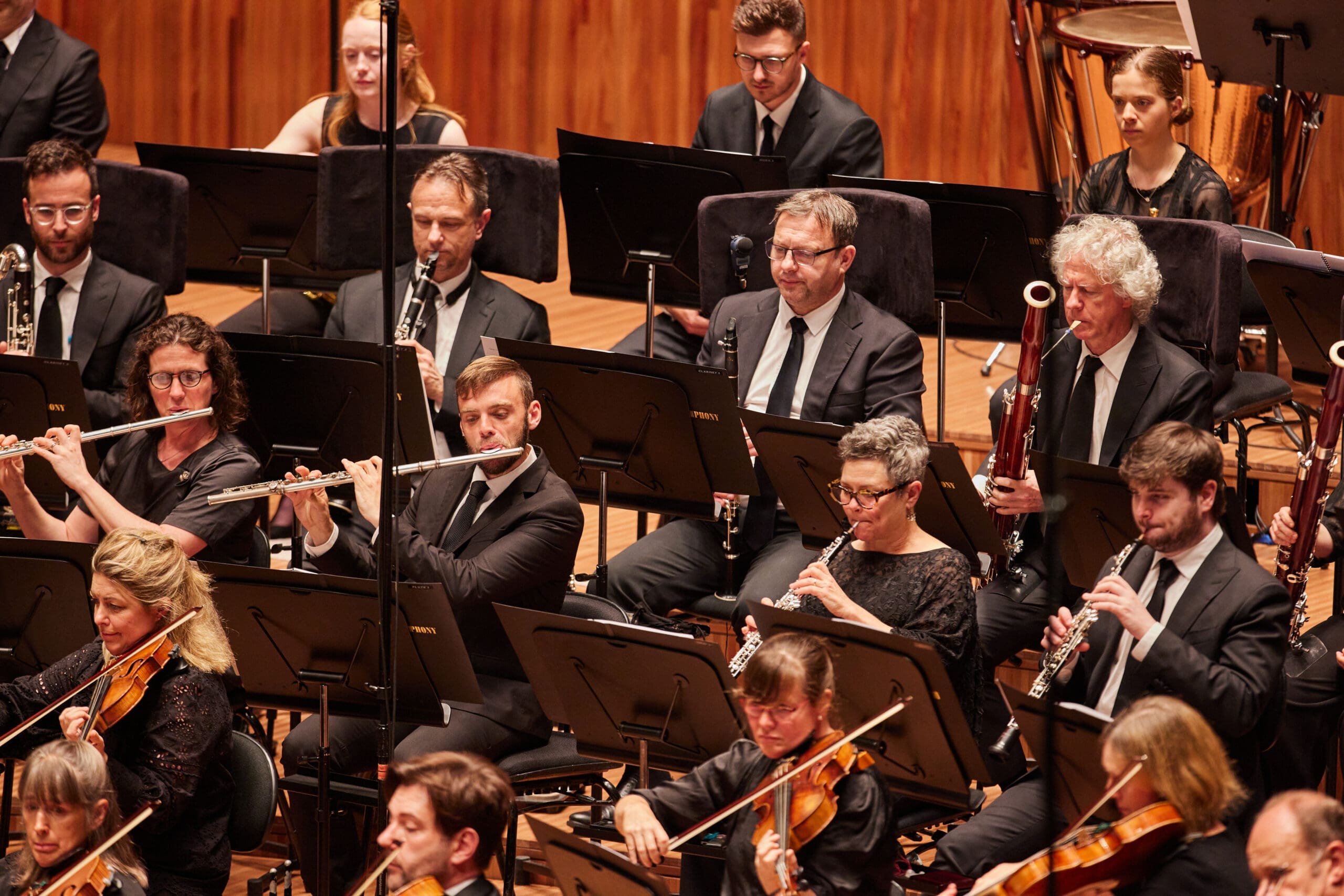He first dazzled as a soloist in 2021 when, in the aftermath of Covid, the orchestra relied on its local talent as few international artists were able to fly in. For that concert he gave a dazzling performance of Carl Nielsen’s 1926 Concerto for Flute and Orchestra under Johannes Fritzsch.
Born in the UK, Batty left his job as Principal Flute with the RTÉ Orchestra in Ireland to join the SSO in 2019 at the age of 27. As a student his talent was spotted early and as a scholar he was supported by Sir Elton John at the Royal Academy in London.
He is keen to expand the flute repertoire – commissioning and premiering new works – but for this latest SSO concert he chose a much older work to showcase his talents, CPE Bach’s Flute Concerto in G Major, written in 1755 when he was working for full-time king and keen amateur flutist Frederick the Great.
With Chief Conductor Simone Young directing 22 string players from the harpsichord, this was a delightful and intimate display of virtuosity over three short movements. We know that the King of Prussia performed Bach’s flute sonatas with the composer at the keyboard – the occasion was captured in a splendid oil painting – but the monarch’s talents didn’t stretch to the four flute concertos.
Batty showed the audience why this was the case with rapid-fire runs, tricky tonguing and passages that demand prodigious breath control.
After the applause died down for this superb pyrotechnic display, which also featured some fine solo work from cellist Catherine Hewgill and Concertmaster Andrew Haveron, Batty resumed his customary seat in the woodwinds while the harpsichord was lifted off the stage and more players came on for the final work on the program, WA Mozart’s Jupiter Symphony.
The composer’s spectacular farewell to the symphonic genre, his 41st, was written in 1788, coincidentally the year in which CPE Bach died and Sydney Cove penal colony was founded. Its never-diminishing popularity is attested to by the fact that this is the third performance of it in Sydney this year, including one in string quintet form by the Australian Haydn Ensemble.
With Paul Dyer and the Australian Brandenburg Orchestra’s five-star survey last month still fresh in my mind, I was keen to see what Young would bring to the table with her reading.
Conducting without a baton, she moulded Mozart’s miraculous melodies and counterpoint into an expansive and sublimely played 32 minutes, from the majestic “hammer blows” of the opening through to the infectious mounting excitement of the final movement.
